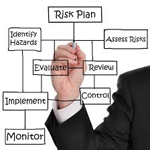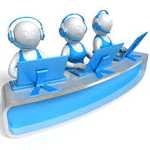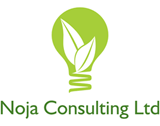Noja Consulting
Limited |
Our Services
Noja Consulting provide a range
of professional services which are described in more
detail below:
Service Management and ITIL
 Service
Management is the practice of aligning the IT and
business function to bring down costs and improve
efficiency with the ethos, IT is the business and
The Business is IT. No longer can organisations see
IT as a peripheral provider, it is now so expensive
it needs to be fully integrated in the organisation
to help deliver their full potential. ITIL
describes processes, procedures, tasks and
checklists that are not organisation-specific, used
by an organisation for establishing integration with
the organisation's strategy, delivering value and
maintaining a minimum level of competency. It allows
the organisation to establish a baseline from which
it can plan, implement and measure. It is used to
demonstrate compliance and to measure improvement. Service
Management is the practice of aligning the IT and
business function to bring down costs and improve
efficiency with the ethos, IT is the business and
The Business is IT. No longer can organisations see
IT as a peripheral provider, it is now so expensive
it needs to be fully integrated in the organisation
to help deliver their full potential. ITIL
describes processes, procedures, tasks and
checklists that are not organisation-specific, used
by an organisation for establishing integration with
the organisation's strategy, delivering value and
maintaining a minimum level of competency. It allows
the organisation to establish a baseline from which
it can plan, implement and measure. It is used to
demonstrate compliance and to measure improvement.
Capability Maturity Model
Integration
 Capability
Maturity Model Integration or CMMI is used to
measure process improvement. CMMI can be used to
guide process improvement across a project,
division, or an entire organisation. Under the CMMI
methodology, processes are rated according to their
maturity levels, which are defined as: Initial,
Repeatable, Defined, Quantitatively Managed,
Optimising. Capability
Maturity Model Integration or CMMI is used to
measure process improvement. CMMI can be used to
guide process improvement across a project,
division, or an entire organisation. Under the CMMI
methodology, processes are rated according to their
maturity levels, which are defined as: Initial,
Repeatable, Defined, Quantitatively Managed,
Optimising.
Risk Management
 Risk
management is the identification, assessment, and
prioritisation of risks followed by coordinated and
economical application of resources to minimise,
monitor, and control the probability and/or impact
of unfortunate events or to maximise the realisation
of opportunities. Risk
management is the identification, assessment, and
prioritisation of risks followed by coordinated and
economical application of resources to minimise,
monitor, and control the probability and/or impact
of unfortunate events or to maximise the realisation
of opportunities.
Software Asset Management
(SAM)
 SAM
is the practice of integrating people, processes,
and technology to allow software licenses and usage
to be systematically tracked, evaluated, and
managed. The goal of SAM is to reduce IT
expenditures, human resource overhead and risks
inherent in owning and managing software assets. SAM
is the practice of integrating people, processes,
and technology to allow software licenses and usage
to be systematically tracked, evaluated, and
managed. The goal of SAM is to reduce IT
expenditures, human resource overhead and risks
inherent in owning and managing software assets.
SAM practices
include:
-
maintaining
software license compliance
-
tracking inventory
and software asset use
-
maintaining
standard policies and procedures surrounding
definition, deployment, configuration, use, and
retirement of software assets and the definitive
media library or DML.
Business Continuity
 Business
continuity, sometimes referred to as Service
Continuity, these cover the processes by which plans
are put in place and managed to ensure that IT
services can recover and continue even after a
serious incident occurs. It is not just about
reactive measures, but also about proactive measures
– reducing the risk of a disaster in the first
instance. Disaster recovery (DR) is the process,
policies and procedures that are related to
preparing for recovery or continuation of technology
infrastructure which are vital to an organisation
after a major incident occurs. Disaster recovery
focuses on the IT that support business, opposed to
business or service continuity, which involves
planning for keeping all aspects of a business
functioning after a major incident. Business
continuity, sometimes referred to as Service
Continuity, these cover the processes by which plans
are put in place and managed to ensure that IT
services can recover and continue even after a
serious incident occurs. It is not just about
reactive measures, but also about proactive measures
– reducing the risk of a disaster in the first
instance. Disaster recovery (DR) is the process,
policies and procedures that are related to
preparing for recovery or continuation of technology
infrastructure which are vital to an organisation
after a major incident occurs. Disaster recovery
focuses on the IT that support business, opposed to
business or service continuity, which involves
planning for keeping all aspects of a business
functioning after a major incident.
Service Desk
 Service
Desk, the “shop window” for IT. It is the central
point of contact between service providers and
users/customers on a day-to-day basis. It is also a
focal point for reporting Incidents and for users
making service requests. If a Service desk is
organised correctly it can be a major asset to any
organisation. Things that need to be considered are
the First Fix rate and the utilisation rate of the
staff. If these are correct the Service desk can be
operated on a cost neutral basis, Jem is an expert
at achieving this. Service
Desk, the “shop window” for IT. It is the central
point of contact between service providers and
users/customers on a day-to-day basis. It is also a
focal point for reporting Incidents and for users
making service requests. If a Service desk is
organised correctly it can be a major asset to any
organisation. Things that need to be considered are
the First Fix rate and the utilisation rate of the
staff. If these are correct the Service desk can be
operated on a cost neutral basis, Jem is an expert
at achieving this.
Contact
us today for an initial, impartial and
confidential discussion about how Noja Consulting
can help your organisation. |

 |